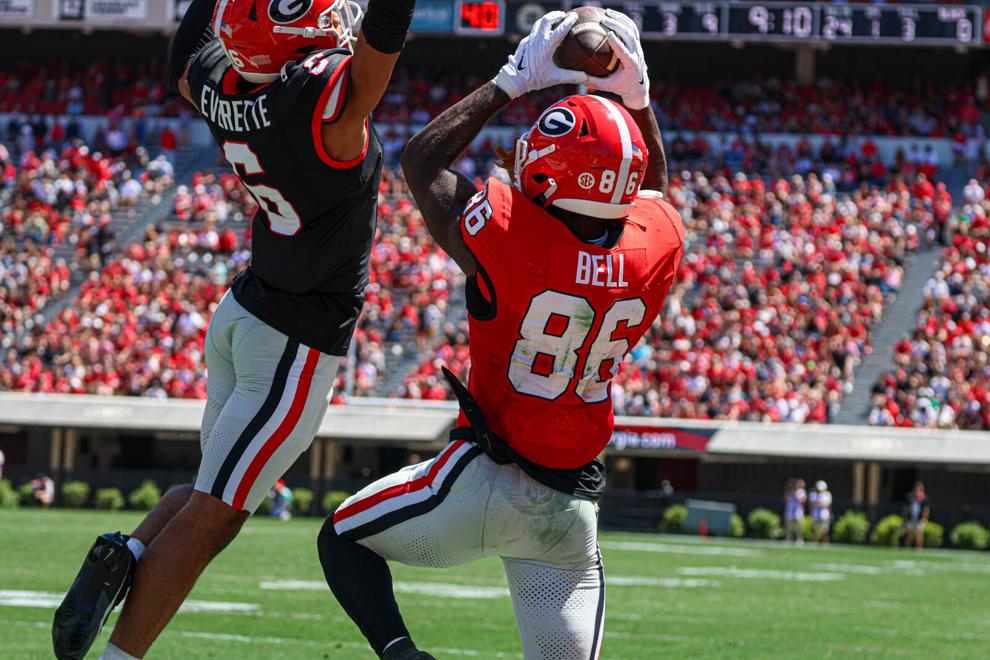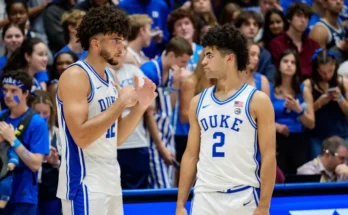84 Years of Homegrown Rivalry: The History of Georgia’s Spring Game
The University of Georgia’s annual spring game has become a staple of the college football calendar, a rich tradition that showcases the future of the Bulldogs program while honoring its past. For 84 years, the event has captured the essence of college football in the state of Georgia, bringing together fans, players, and alumni for a celebration of their beloved Bulldogs. While it serves as a time to evaluate the team, it’s much more than just an exhibition; it is a ritual steeped in history, rivalry, and pride.
The origins of Georgia’s spring game can be traced back to 1937, just a few years after the university’s football program had established itself as one of the South’s premier teams. At the time, head coach Harry Mehre recognized the importance of spring practice as a way to evaluate talent, fine-tune schemes, and prepare for the upcoming fall season. However, Mehre also understood that the fanbase craved more than just practice; they wanted to see their team in action, even if it was only for a few short hours. Thus, the idea of a spring game was born, and what began as a modest intra-squad scrimmage has evolved into one of the premier college football events of the offseason.
From its inception, the spring game served as a unique opportunity to witness Georgia football’s potential. Unlike many teams in the Southeastern Conference, Georgia did not hold open practices regularly, so the spring game became the only chance for fans to get a sneak peek at the upcoming season’s team. Early on, the event was a low-key affair, held in the historic Sanford Stadium with only a few thousand spectators in attendance. In those years, the game was less of a spectacle and more of a scrimmage, with coaches using it as an opportunity to test new players, evaluate positions, and experiment with different offensive and defensive schemes.
The first significant shift in the spring game’s prominence occurred in the 1950s, as Georgia football grew in stature under the guidance of coaches like Wally Butts. During this period, the Bulldogs began to establish themselves as a powerhouse within the SEC. Butts, who served as head coach from 1939 to 1960, was instrumental in solidifying Georgia’s reputation as a football powerhouse, and his leadership helped bring the spring game into the mainstream of Georgia football culture. With increased success on the field came a larger fanbase, and the annual spring game grew in size and importance. Sanford Stadium, already a cherished venue, began to fill with fans eager to see the next great Georgia football player or the next big play in the making.
By the 1970s and 1980s, under legendary head coach Vince Dooley, the Georgia spring game had transformed into an event that symbolized the community spirit of Georgia football. Dooley, who led the Bulldogs to a national championship in 1980, placed a strong emphasis on spring practice as a vital component of team development. The event gained even more prominence, drawing large crowds of both devoted alumni and families of current players, all eager to witness the future of their beloved program. The atmosphere during these years was one of excitement and anticipation, as fans flooded into the stadium to see which players would rise to the occasion and make their mark on the roster.
Perhaps the most significant development in the history of the Georgia spring game came in the late 1980s when the event became a vital part of the Bulldogs’ recruiting process. Coaches understood that recruiting wasn’t just about showcasing talent to high school seniors; it was also about connecting with the community and demonstrating the program’s commitment to its fans. As a result, the spring game became more than just a football game—it became a family event that brought together generations of Bulldogs supporters. The crowds grew larger, and the excitement surrounding the event reached a fever pitch.
During this time, the event also became a source of fierce competition. As the Bulldogs began to assert themselves as a dominant force in the SEC, the spring game took on the role of an informal rivalry between the team’s first-team and second-team players. This sense of rivalry within the team was fostered by coaches who wanted to create a competitive environment during the spring practice sessions. Each player was aware that their performance during the spring game could impact their position on the depth chart heading into the fall. The spring game, therefore, became an intense battleground where every play counted, and every player was eager to prove their worth.
In more recent years, the Georgia spring game has evolved into a more polished event, complete with pre-game fan experiences, entertainment, and festivities. The game itself has seen numerous changes, from alterations to the scoring system to the implementation of unique player draft formats. Coaches and players have also found ways to make the event more exciting for fans, often introducing high-energy plays, dramatic finishes, and intense showdowns between the team’s top prospects.
As Georgia football continued to rise in prominence throughout the 1990s and 2000s, particularly under head coaches such as Jim Donnan and Mark Richt, the spring game continued to be a key moment in the offseason. The event was no longer just a way to evaluate talent; it had become a hallmark of the program’s commitment to engaging with its fans. Fans eagerly anticipated the game every year, often making it a family tradition to attend the event and watch the next generation of Bulldogs take the field.
Under Kirby Smart, Georgia’s head coach since 2016, the spring game has maintained its status as a major event on the Bulldogs’ calendar. Smart, who has led the team to multiple national championships, has infused the spring game with a renewed sense of competition. While the spring game still serves as a valuable evaluation tool for coaches, it is also an opportunity to showcase the program’s elite talent and celebrate the continued success of Georgia football. The game has evolved into a full-scale event, with fan festivities, food trucks, and even music performances, all adding to the electric atmosphere surrounding the event.
In recent years, the spring game has seen record attendance figures, with thousands of fans flocking to Sanford Stadium each year to get a glimpse of the future of Georgia football. The game has become an integral part of the program’s culture, symbolizing the close-knit bond between the team, the fans, and the state of Georgia itself. It is an event that fans eagerly look forward to each year, as they cheer on the next wave of players destined for greatness in the SEC and beyond.
Beyond the spectacle of the event itself, the spring game holds a special place in the hearts of those who have witnessed the evolution of Georgia football over the decades. From its humble beginnings as a modest practice scrimmage to its current status as one of the premier events of the college football offseason, the spring game has been a reflection of the program’s growth, success, and unwavering commitment to excellence.
The history of Georgia’s spring game is more than just a timeline of events; it is a reflection of the passionate fanbase, the competitive spirit of the players, and the unyielding tradition of Georgia football. For 84 years, the spring game has served as a symbol of pride, community, and rivalry—an annual celebration that reminds everyone why the Bulldogs’ football program is one of the most storied in the history of college football. Whether it’s the competitive battles on the field or the memories created by fans in the stands, the Georgia spring game remains an enduring part of the fabric of Georgia football.



